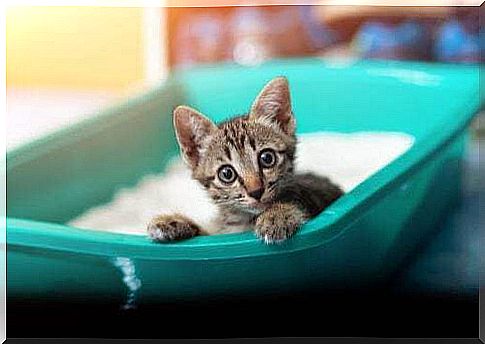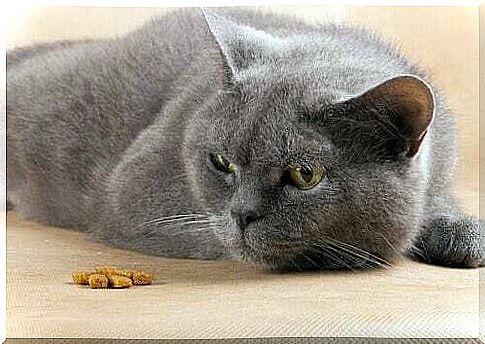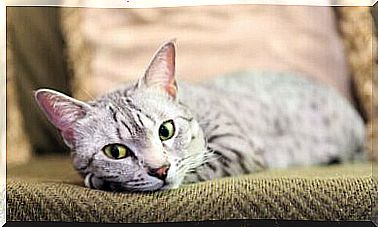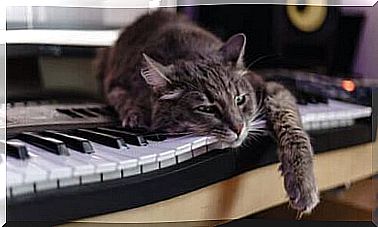Dysentery In Cats: Causes And Symptoms

Dysentery in cats and other animals occurs with liquid or semi-liquid stools, accompanied by blood. In this article, we will talk about the symptoms of this disease in pets, especially cats.
Dysentery in cats may not be easy to recognize
One of the most common problems in cats are diarrhea and gastrointestinal upset. Depending on your cat’s lifestyle and habits, it may not be easy to recognize this type of ailment.
Most cats defecate once a day. In the case of normal stool, the odor is not excessive and the consistency allows for easy removal.
Now, blood in a cat’s stool can be difficult to identify. If it originates in the lower intestinal or rectal tract, that of the large intestine, the blood is likely to appear fresh. The litter box should be kept under control, as red or pink drops or spots often appear.
Also, if the bleeding originates from the upper part of the intestinal tract, especially in the small intestine, the blood will be black or brown. This color change is due to the partial digestion of the blood by the enzymes secreted in the small intestine. The blood will often appear with dark spots or like coffee beans.
It is important to note that both constipation and diarrhea can cause blood in the feces of cats. Bright red blood, without hard, dry stools generally indicates that the problem is located near the rectum and anus.

What are the causes of dysentery in cats?
This list of everything that can cause dysentery in cats should be explored, however here are some general factors:
- Parasites.
- Viral or bacterial infections.
- Food indiscretion or sudden change in diet.
- Stress: Stress, anxiety, or excessive arousal can cause colitis.
- Primary inflammatory disorders.
- Metabolic Diseases: From pancreatic or liver disorders to thyroid imbalances, there are many other problems that alter the environment of the gastrointestinal tract and can cause bloody diarrhea.
- Medicines or toxins: Some medications, including some antibiotics, can upset the balance of the gastrointestinal tract, just as some toxins do.
What to do in case of dysentery in cats?
Since there are so many potential causes of dysentery in cats, it’s important to see your vet regularly. It is obvious that many of the causes of diarrhea require specific therapy. In case of dysentery, it is always good to consult your veterinarian.
While the doctor prescribes the proper treatment, the most important thing to do is to maintain hydration: in fact, in cases of dysentery, it is essential to avoid dehydration and electrolyte imbalance.

Associated symptoms
In general, if your cat shows that he has a little soft stools, but is still happy, playful and eats normally, he can probably wait to see what his next stool will look like. On the contrary, you have to worry about:
- Loss of appetite.
- Lethargy or depression.
- Pain or discomfort.
What to do in case of blood in the cat’s feces?
If there are any changes in your cat’s bowel movements, you should notify your veterinarian immediately. Keep in mind that loose stools in the morning can cause dehydrating diarrhea at night.
Blood in the stool, red or black, is always a concern. Particularly dark blood can indicate a serious condition, unlike red blood which could be anything from benign dietary changes to cancer.
In short, if you notice something odd in your cat’s feces, don’t hesitate to seek veterinary help. Don’t expect it to go away on its own – the best thing to do is keep paying attention to the litter box and make sure you act in time.









